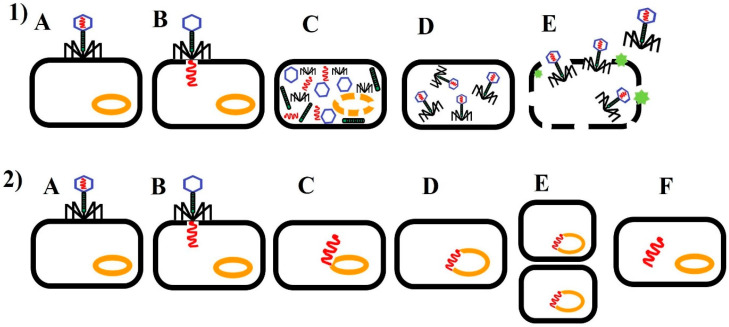Figure 1.
Life cycle of bacteriophage. (1) Lytic cycle. (A) Attachment: the phage binds to a receptor on the bacterial cell surface. (B) Penetration: the phage inserts its DNA into the bacterial cytoplasm. (C) DNA replication and protein synthesis: the phage takes over the bacterial cell functions and directs the synthesis to produce of phage DNA copies and proteins. Bacterial DNA is degraded. (D) Assembly packaging: new phage particles are assembled within host cell. (E) Lysis: the phage produces an enzyme which destroys the bacterial cell wall, causing lysis and the release new phages. The bacterial host cell is destroyed. Progeny phages can infect further bacterial cells and the cycle starts again. (2) Lysogenic cycle. (A) Attachment: the phage binds to a receptor on the bacterial cell surface. (B) Penetration: the entry of phage nucleic acid. (C) Integration of phage DNA: the phage DNA then moves through the cytoplasm to the host bacterial DNA and integrates itself into the host genome. (D) Prophage stage: the phage DNA is incorporated into the bacterial genome and becomes a (noninfective) prophage. (E) The prophage is replicated along with the bacterial genome. The bacterial cell divides and prophage DNA is transferred into daughter cells. (F) Sometimes the prophage can be induced to become active. The prophage DNA is excised from the bacterial genome and enters the lytic cycle.

